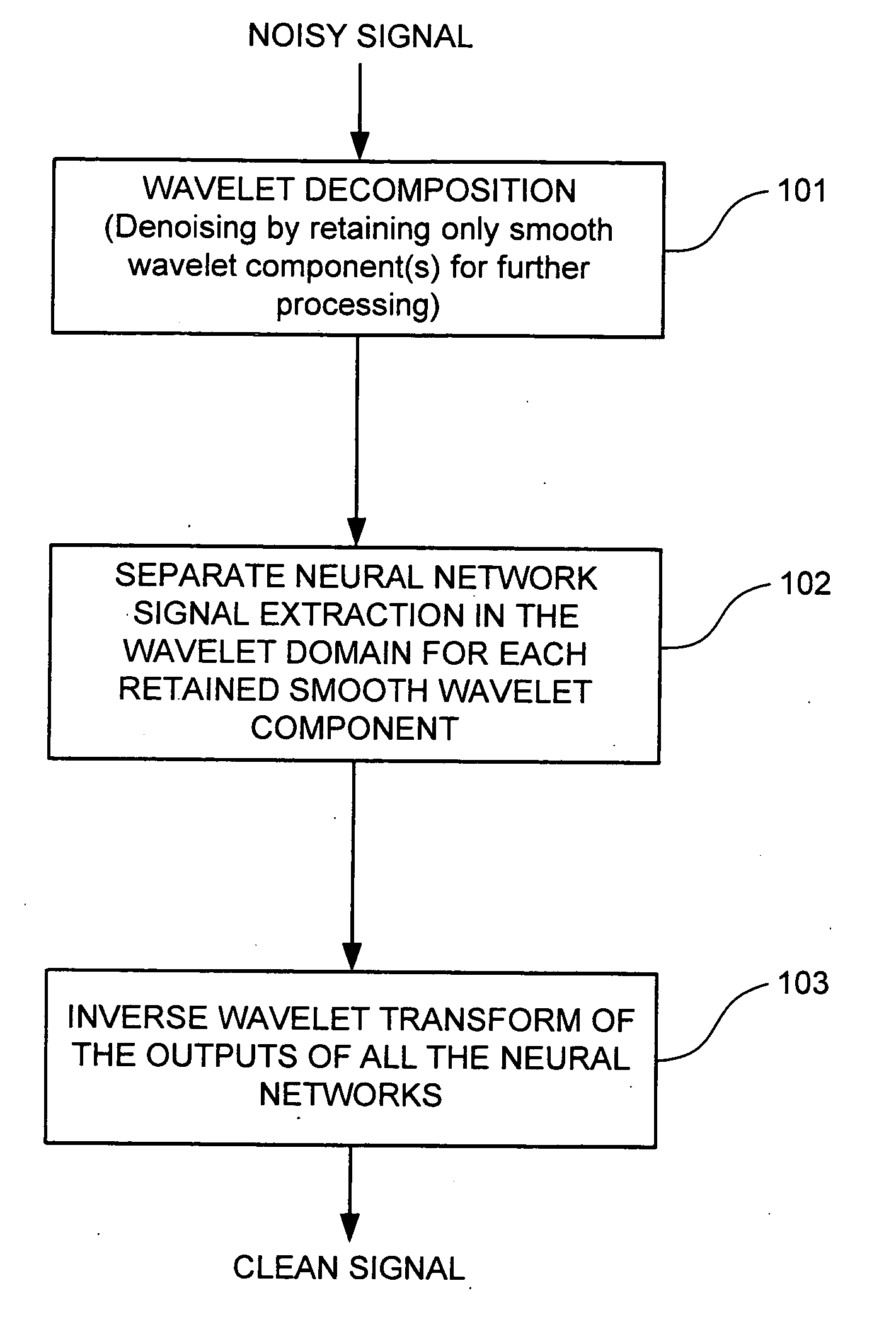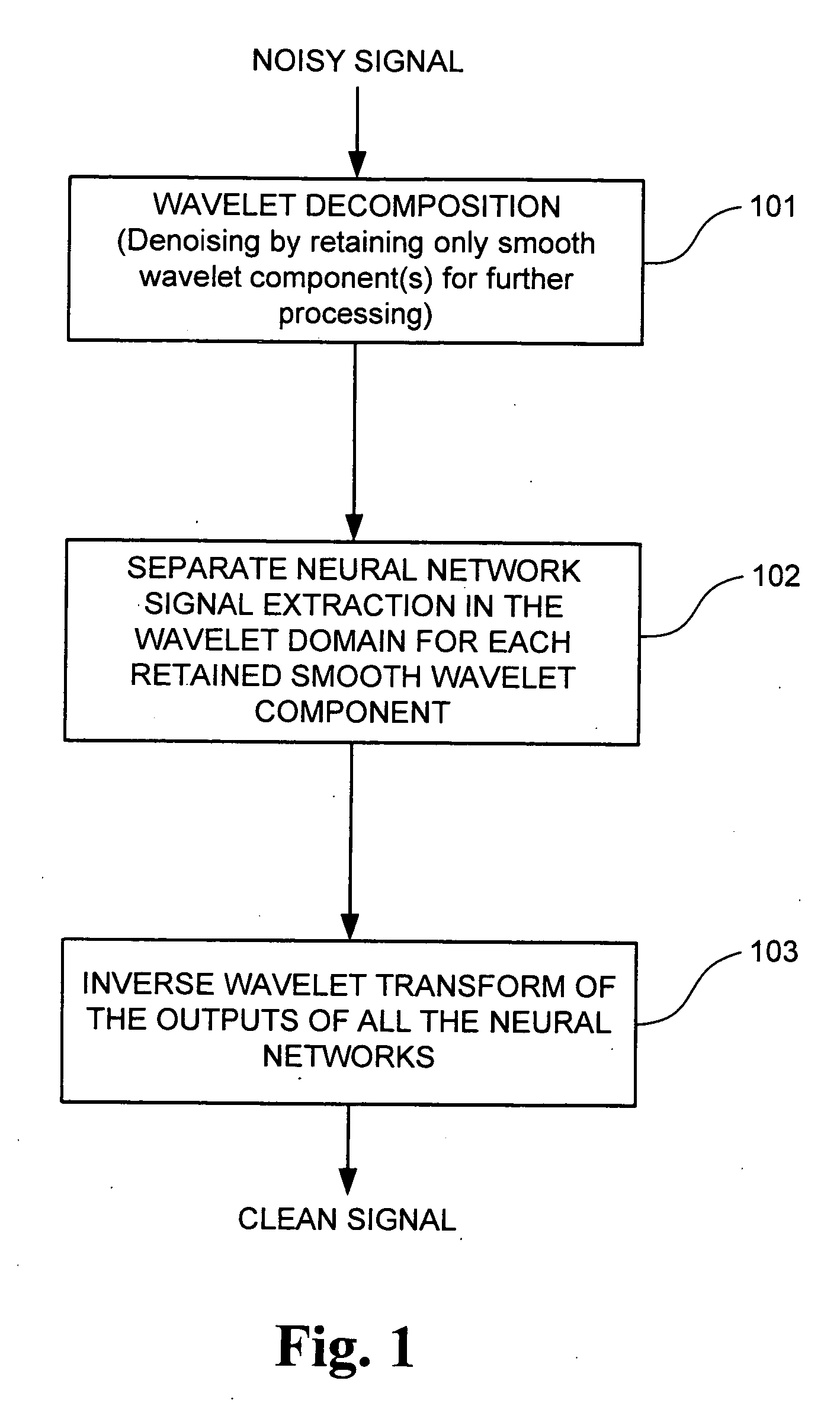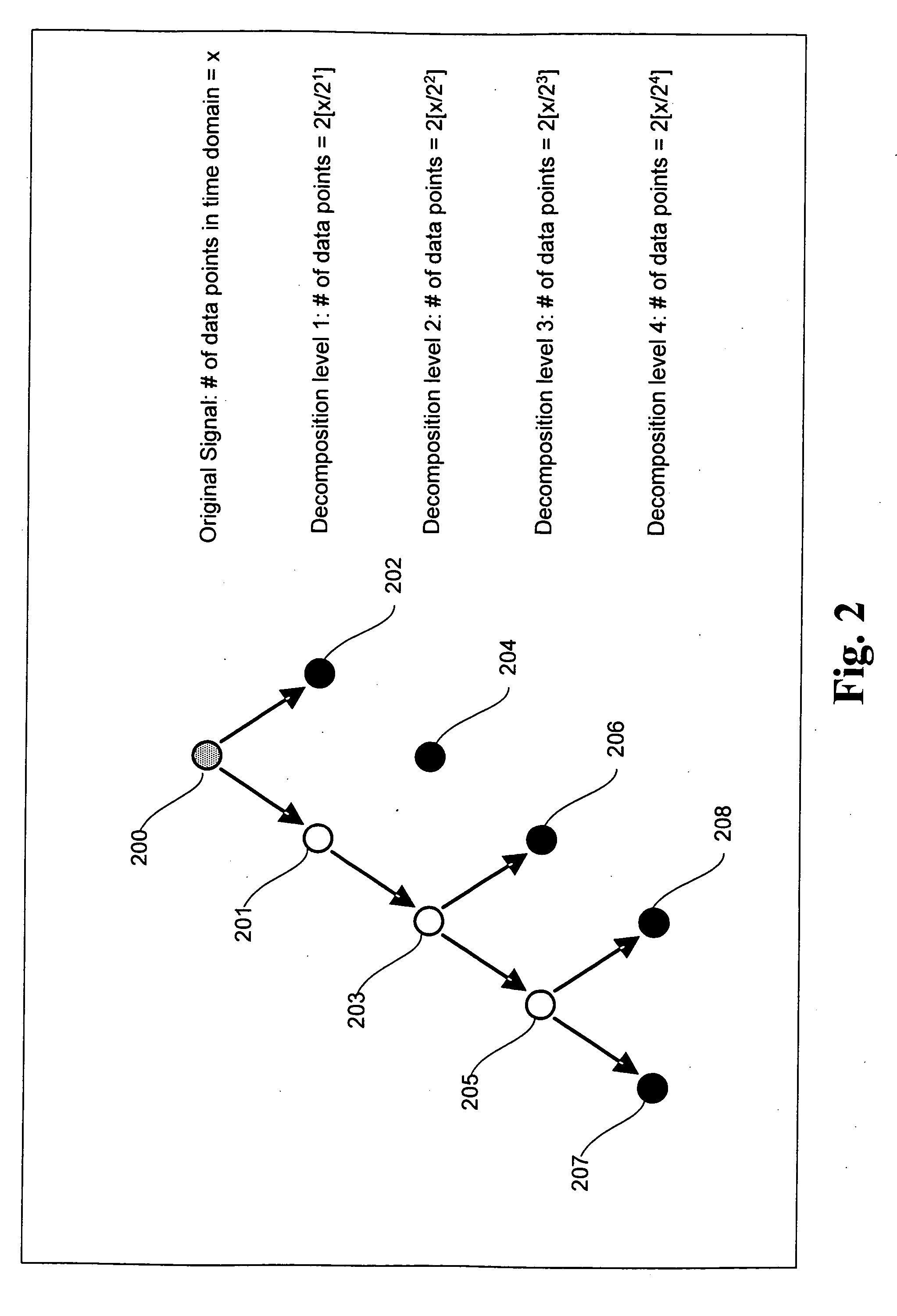Signal processing method and system for noise removal and signal extraction
a signal processing and signal extraction technology, applied in the field of signal processing, can solve the problems of not being able to recover the signal lost by crude pre-processing, affecting the issues of storage and transmission, and data compression much harder
- Summary
- Abstract
- Description
- Claims
- Application Information
AI Technical Summary
Problems solved by technology
Method used
Image
Examples
Embodiment Construction
[0022] Generally, the present invention is directed to an intelligent signal processing method and system capable of extracting trace signals embedded in high levels of noise. In particular, the present invention is a denoising and signal extraction technique based on a combination of discrete wavelet decomposition and the use of one or more artificial neural networks, with each network pre-trained for processing a corresponding wavelet component in the wavelet domain. The wavelet decomposition generally serves to segment the data into smaller subsets, i.e. wavelet components, each of a different size scale. By using one or more (but not all) of the wavelet components for subsequent processing, the signal may be separated from the noise coming from instrumentation and / or the detector so that it is more amenable to interpretation by signal interpretation methods, such as chemometrics and other techniques for separating a signal into its constituent parts. Furthermore, within each sca...
PUM
 Login to View More
Login to View More Abstract
Description
Claims
Application Information
 Login to View More
Login to View More - R&D
- Intellectual Property
- Life Sciences
- Materials
- Tech Scout
- Unparalleled Data Quality
- Higher Quality Content
- 60% Fewer Hallucinations
Browse by: Latest US Patents, China's latest patents, Technical Efficacy Thesaurus, Application Domain, Technology Topic, Popular Technical Reports.
© 2025 PatSnap. All rights reserved.Legal|Privacy policy|Modern Slavery Act Transparency Statement|Sitemap|About US| Contact US: help@patsnap.com



